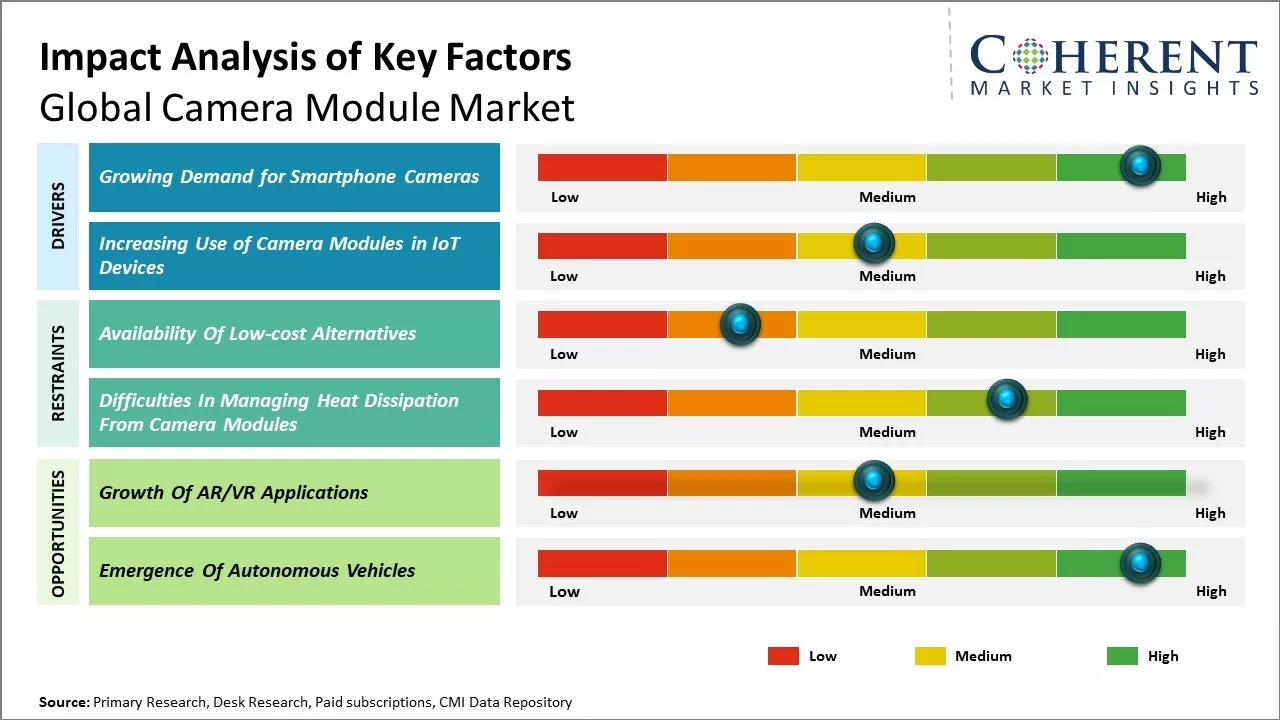The global camera module market is estimated to be valued at US$ 34.95 Bn in 2025 and is expected to reach US$ 77.31 Bn by 2032, exhibiting a compound annual growth rate (CAGR) of 12.0% from 2025 to 2032.

To learn more about this report, Request sample copy
The camera module market is expected grow steadily during the forecast period. The growth in the demand for smartphones with multiple rear and front cameras has boosted the demand for camera modules. In addition, the rising adoption of driver assisted technologies and autonomous vehicles has increased the use of camera modules for Advanced Driver Assistance Systems (ADAS) features. Emerging applications of cameras in entertainment electronics, such as Virtual Reality Headset and smart wearables, is another factor driving the camera module market. However, high costs of manufacturing camera modules with advanced features can restraint the market growth to some extent.
Growing Demand for Smartphone Cameras
The use of camera modules in smartphones has seen tremendous growth over the past decade. As smartphones have become increasingly powerful and feature-rich, camera technology has become a key selling point for original equipment manufacturer (OEMs) looking to stand out in a crowded market. Consumers now expect high megapixel counts and advanced photo capabilities similar to dedicated cameras. Leading manufacturers spare no expense in incorporating the latest camera innovations to meet rising expectations. This has created booming demand for camera modules with higher resolutions, larger image sensors, advanced auto-focus capabilities, and other performance enhancements. Smartphone OEMs partner with camera module suppliers to rapidly deliver new models with cutting-edge camera systems. As a result, the R&D budgets and production volumes directed towards smartphone-grade camera modules have expanded massively. Forward-facing cameras are another fast-growing segment driven by the rise of video chatting apps and selfies. Additional cameras are also being added for telephoto zoom, wide-angle perspectives, and augmented/virtual reality applications. All of this contributes to the camera module market continually scaling new heights to support the camera-centric nature of modern smartphones.
For instance, in May 2023, Sharp, a Japanese electronics company launched the Aquos R8 Pro, which boasts a 1-inch Leica image sensor. The phone features a 47.2MP primary camera with a Summicron lens, contrasting with the 50.3MP 1/1.55-inch camera on other models. The device is powered by a 4,570 mAh battery and a Qualcomm Snapdragon 8 Gen 2 chipset paired with LPDDR5x RAM and UFS 4.0 storage.
Joining thousands of companies around the world committed to making the Excellent Business Solutions.
View All Our Clients